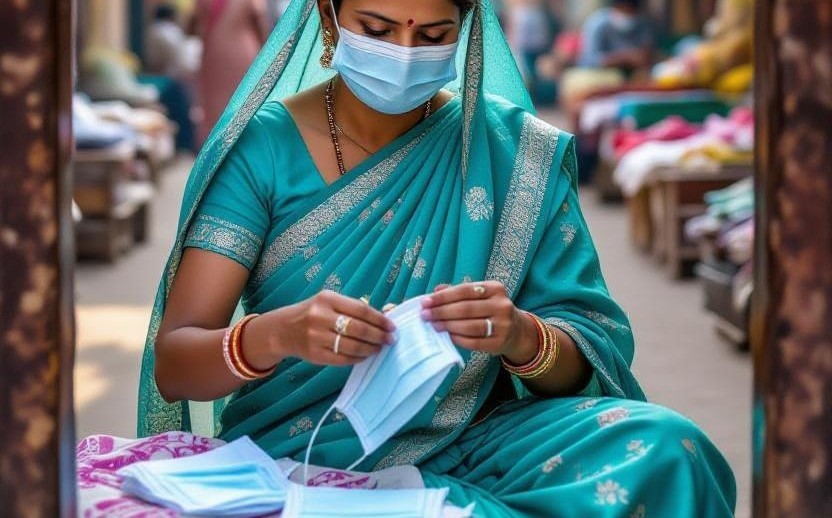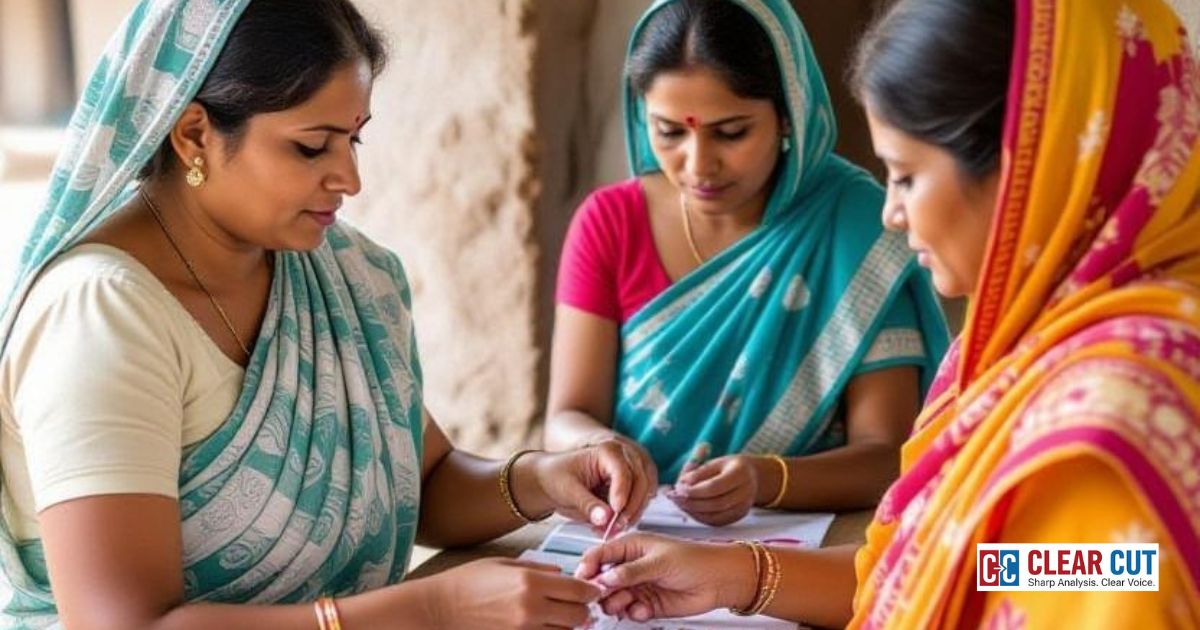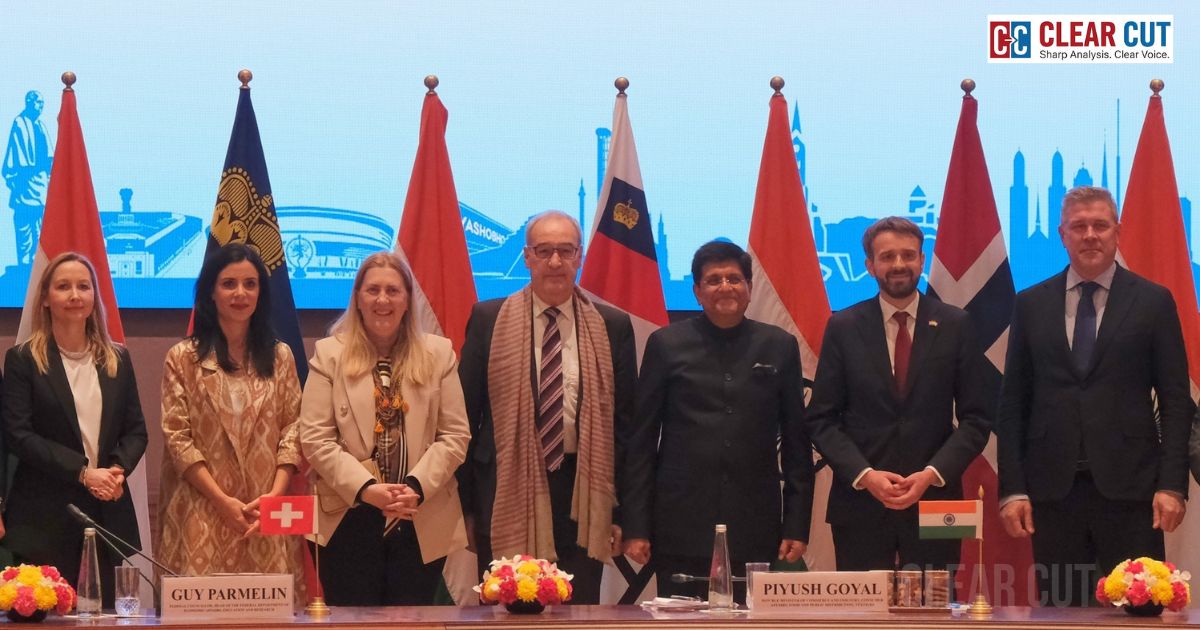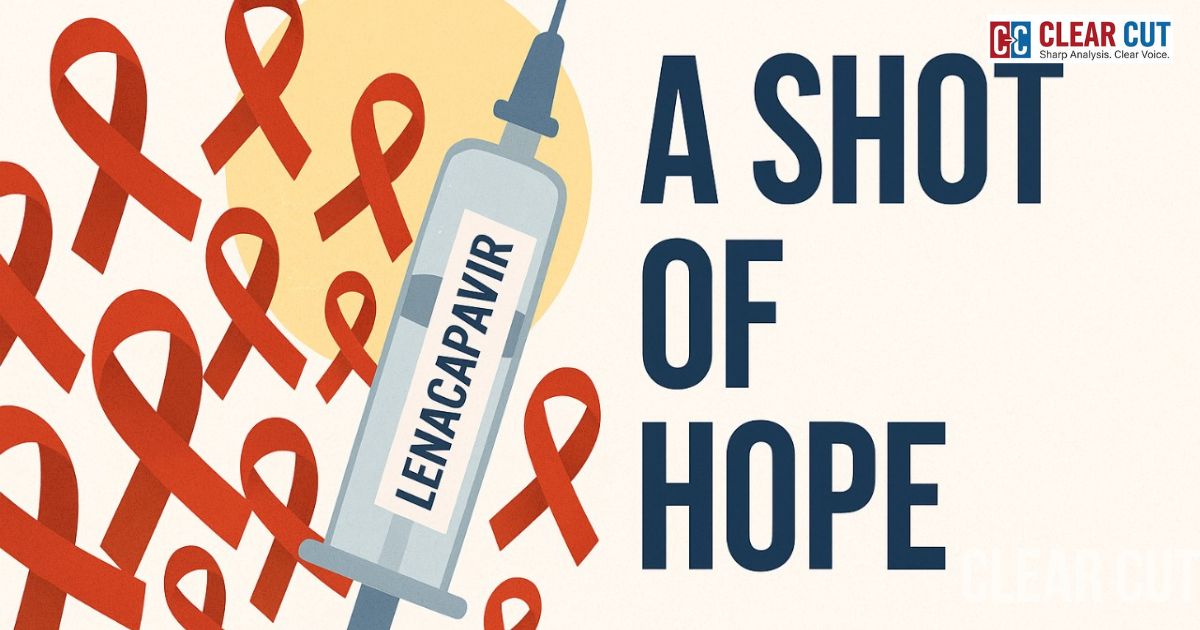Photo Credit: Antara Mrinal
Clear Cut Health Desk
New Delhi, UPDATED: Sep 19, 2025 12:05 IST
Written By: Antara Mrinal
When the sirens of the health system fall silent in India’s remotest corners, it is the soft knock of an ASHA worker at the village door that keeps hope alive. ASHAs (Accredited Social Health Activists) bear the burden when everything breaks down, whether it is health systems collapsing due to pandemic waves, or isolated hamlets being cut off by natural disasters and conflicts. ASHA employees were the unsung heroes of India’s rural health system long before the pandemic brought them to the public’s attention. They ensured vaccinations, guided safe births, and connected even the most isolated households to necessary care.
The Seeds of the Role : ASHAs in Rural India
The ASHA program was started in 2005 by the National Health Mission (NHM) of India as a component of the National Rural Health Mission. The concept was straightforward but revolutionary: develop a community-based, trained female health volunteer who could serve as a vital link between isolated homes and the official healthcare system. This cadre came about as a result of policymakers realizing that communities, particularly women and children, were frequently unaware of, reluctant to use, or geographically remote from India’s rural health services, rather than the lack of facilities alone. The government made sure that health interventions were integrated into the villages’ cultural fabric rather than being imposed from the outside by choosing women who were dependable locals who were conversant in the dialects, customs, and social networks of the area.
ASHA staff were given a wide range of tasks, including deliveries to institutions, organizing vaccination campaigns, keeping an eye on nutrition, encouraging cleanliness, giving contraception, distributing necessary medications for TB or malaria, keeping track of births and deaths, and most importantly fostering public confidence in the healthcare system. As time went on, their responsibilities grew to include disease surveillance, lifestyle disease counseling, frontline response to natural disasters, COVID-19, and immunization campaigns.
It’s interesting to note that although “ASHA” is the national name, the program varies by region. For example, they are known as “Community Health Workers” in certain northeastern states, “Link Workers” in West Bengal, and “Sahyoginis” in Rajasthan. Their essence is the same, regardless of the different titles: a grassroots health activist selected by the people, for the people. With over a million ASHAs operating throughout India, they currently comprise the largest volunteer force in community health worldwide and serve as a real-life illustration of how locally driven solutions can influence national health outcomes.
Their role has grown over time, particularly during the times of crisis. They have started working as emergency responders, logistic coordinators, and even counselors. According to a study published in The Hindu, many ASHA workers ‘triple shift’, supporting health centers, engage in community health initiatives, all while taking care of their own households (The Indian).
ASHAs Across India: Unequal Numbers, Unequal Pay, Shared Burden
With more than a million women dispersed throughout India’s towns and villages, the ASHA program currently boasts the largest community health volunteer force in the world. However, the appearance of their recognition and presence varies greatly from state to state. The majority of states still primarily rely on task-based incentives, which leave earnings uncertain and frequently delayed, even though states like Kerala and Sikkim offer comparatively higher monthly honoraria. While rural cadres are more fully staffed at a rate of one per 1,000, urban areas continue to have high vacancy rates, leaving large populations underserved. The table below shows the difference in wages received by ASHAs in different states of India :
| State | Total ASHAs (2024) | Honorarium / Wage | Local Name |
| Uttar Pradesh | 167,492 | Mainly task-based (avg. ₹2,000–₹3,000/month) | ASHA |
| Maharashtra | 70,267 | ₹3,500 fixed + incentives | ASHA |
| Madhya Pradesh | 69,450 | Largely task-based | ASHA |
| West Bengal | 65,743 | ~₹3,000 fixed + incentives | Link Worker |
| Odisha | 49,138 | ₹2,000–₹3,000 fixed + incentives | ASHA |
| Bihar | 90,039 | Task-based (earnings ~₹2,500–₹3,500) | ASHA |
| Kerala | ~26,000 | ₹6,000 fixed; avg. earnings ₹10,000–13,500 | ASHA |
| Tamil Nadu | 2,604 | Task-based | ASHA |
| Rajasthan | ~50,000+ | ₹2,500 fixed + incentives | Sahyogini |
| Sikkim | ~1,000+ | ₹10,000 fixed (as of 2022) | ASHA |
Sources: NHM/NHSRC 2024 state data | Rajya Sabha replies | Mar 2025 | State govt. orders | The Week, 2025 | Indian Express, 2020
Tales from the Field
The Forested Landscapes of Parvati Dora and Sabitri Bisoyee, Odisha :
Working on foot across 13 villages spread to 12-15 square kilometers of rough, forested terrain in a remote tribal district, Sabitri operates amidst conflict and a lack of infrastructure (India Better). Despite only having completed primary school, Parvati manages maternal health examinations, distributes medications, and takes blood samples. When Barti Jani, who was three months pregnant, experienced severe stomach pain one night, Moti Jani, another ASHA, came to her aid at two in the morning, arranged for a rickshaw, and made sure Barti had surgery (India Better).
Beyond the Call During Lockdown : Bharati Menaria :
During COVID-19 lockdown in Seriya Village, Udaipur, Bharati Menaria went above and beyond the call of duty. She cared for the disabled, organized and delivered ration kits, stitched cloth masks, and even offered psychological counseling. “I stitched over 300 masks, arranged rations, and counselled people. Sometimes I slept only two hours,” Bharati Menaria described of her COVID lockdown work (SAGE Journals).
Her actions serve as a reminder that ASHA’s influence frequently extends far beyond healthcare. It includes crisis management, social support, and bridging the gap between vulnerable households and government services.

Beyond COVID Crises: Access, Terrain, and Conflict
ASHAs operate during different crises despite the fact that the pandemic was an important, apparent stress test:
- Tribal conflict and extremism: ASHAs continue to traverse risk-prone terrain at their own risk to serve pregnant women or children in distress in forests where Maoist presence or insurgent forces constrict movement (India Better).
- Seasonal isolation and natural disasters:Monsoons causing natural disasters like floods and landslides often isolate villages. ASHAs are among the first to respond in these situations, offering primary first aid, evacuation guidelines, ensuring adherence to vaccination schedules, and bridging communication gaps. Their practical experience in the Northeast, Kashmir, the Himalayas, etc., reflects a chronic burden, even when there is no overall recent data.
- Systemic weakness: Inadequate supplies, transportation, and communications; often, no medical facility is nearby. They have to manage all of the logistics themselves, including arranging for emergency transport and covering their own supplies and medications. These costs are seldom reimbursed (The Hindu).
What Remains (Despite adversity)
ASHAs are well rooted in the community. They understand local mores and taboos and use the local dialect. They are the ones that one has to rely on during a crisis when others may not be reliable due to this trust. ASHAs adapt by staying overnight in villages, enlisting community volunteers, and using personal networks to receive emergency support since formal health infrastructure is often unavailable or distant. Mostly, individuals are motivated by a desire to serve; preserving someone’s life (e.g., aiding in a successful delivery or ferrying a labouring individual during odd hours) gives meaning that makes sacrifices worth continuing.
India’s Accredited Social Health Activists (ASHAs) now constitute the globe’s largest health community volunteer workforce, with over one million women deployed across states and union territories based on revised National Health Mission (NHM) statistics (Sept 2024). The number was also reportedly around 1.05 million ASHAs in mid-2022, highlighting the immense magnitude of this human force. Though their importance is invaluable, ASHAs are still volunteers, their compensation being incentive-based and variable among states: Kerala, for example, pays a uniform honorarium of around ₹6,000 per month whereas Maharashtra gives ₹3,500, and most others survive mainly on a task-based payment (NHM). Their service extends well beyond incentives, several studies capture how ASHAs are the backbone of rural health systems, providing maternal and child care, undertaking immunisation campaigns, disease surveillance, and even emergency responses like during the COVID-19 pandemic, sometimes taking on multiple roles under severe workloads.
To make the service of ASHAs actually worth their sacrifice, India must shift from symbolic appreciation to actually incorporating them into the public health system as valued members of it. This starts with just and on-time compensation, regular monthly salaries on par with living wages, topped by performance-linked incentives, and paid without delay. In addition to economic security, ASHAs are entitled to social security provisions like family health insurance, pensions, and maternity protection that recognize the dual roles they play as care providers at home and in their workplace. Just as important are opportunities for advancement: higher training, certified qualifications, and transparent career pathways into positions such as auxiliary nurse midwives or community health officers. Equipping with the basics like transport allowances, safety equipment, mobile phones, and medic kits, would alleviate the hardship of working in disaster or isolated areas. Acknowledgement also provides a platform for ASHAs to speak, awarding them recognition, and highlighting their work in the media can regain dignity for their profession. Finally, by transforming them from “volunteers” to frontline health workers, aided by state institutions as well as communities at the grassroots level, India can make sure that their work is not only appreciated but also perpetuated for the days to come.




